This homemade basil pesto sauce is a delicious and healthy way to jazz up your meals. And this pesto fresco is packed with fresh and zesty flavors – so it’s perfect for adding a boost of flavor to any dish.
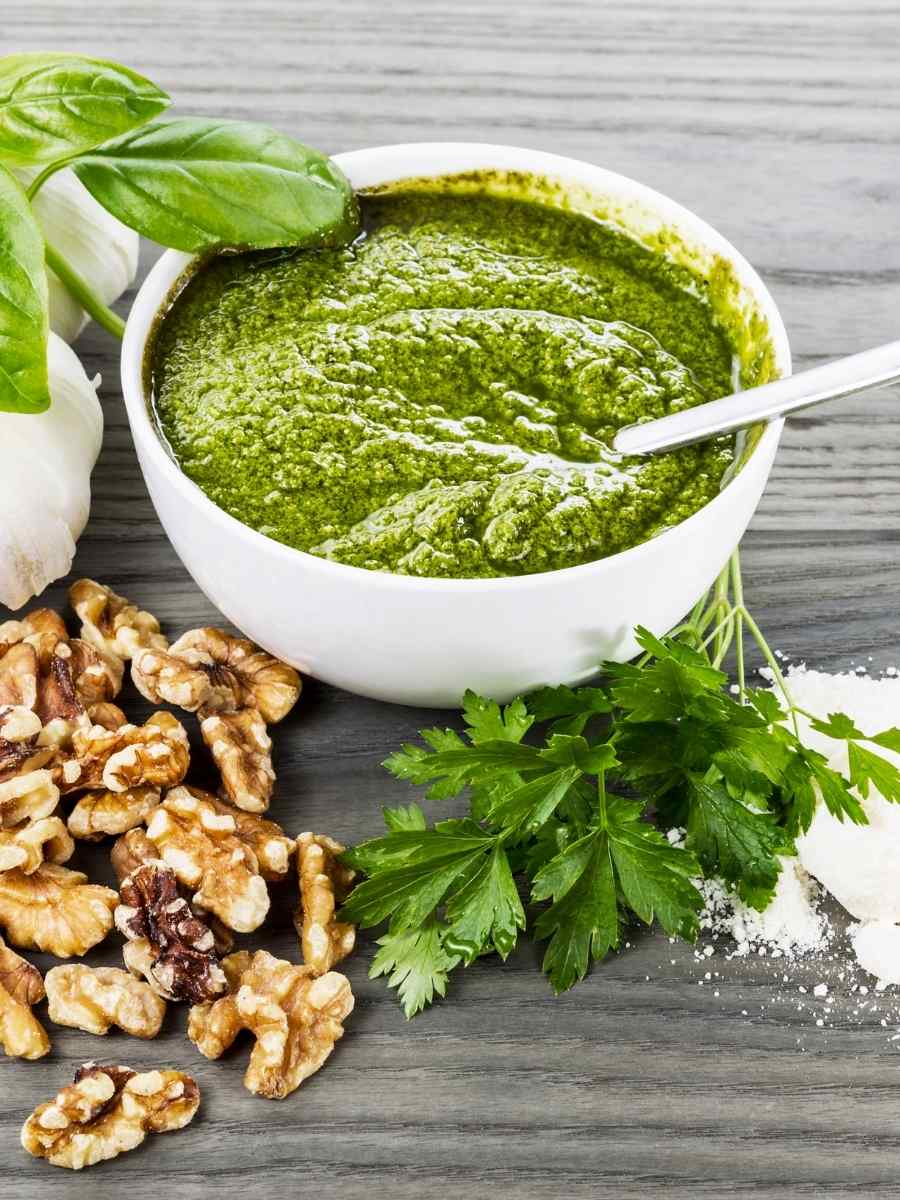
Content Covered Here
Why We Love This Recipe
- It’s Delicious And Fresh – I used to buy store-bought basil pesto sauces like Classico Pesto and Kirkland Pesto, but once I tasted fresh pesto sauce, it was love at first taste! You cannot beat the bright, zesty flavor of pesto fresco or fresh basil pesto.
- Basil pesto is healthier than cream-based sauces – it contains antioxidants from the basil, and garlic has anti-inflammatory properties.
- It goes with almost any dish! There are so many ways to use basil pesto sauce. Use it in pasta dishes like our pasta pesto and peas, on top of our fire roasted pizza, or as a spread on a sandwich or wrap.
If you love pesto, then you’ll also love our pesto vinaigrette.
Ingredient Notes and Substitutions
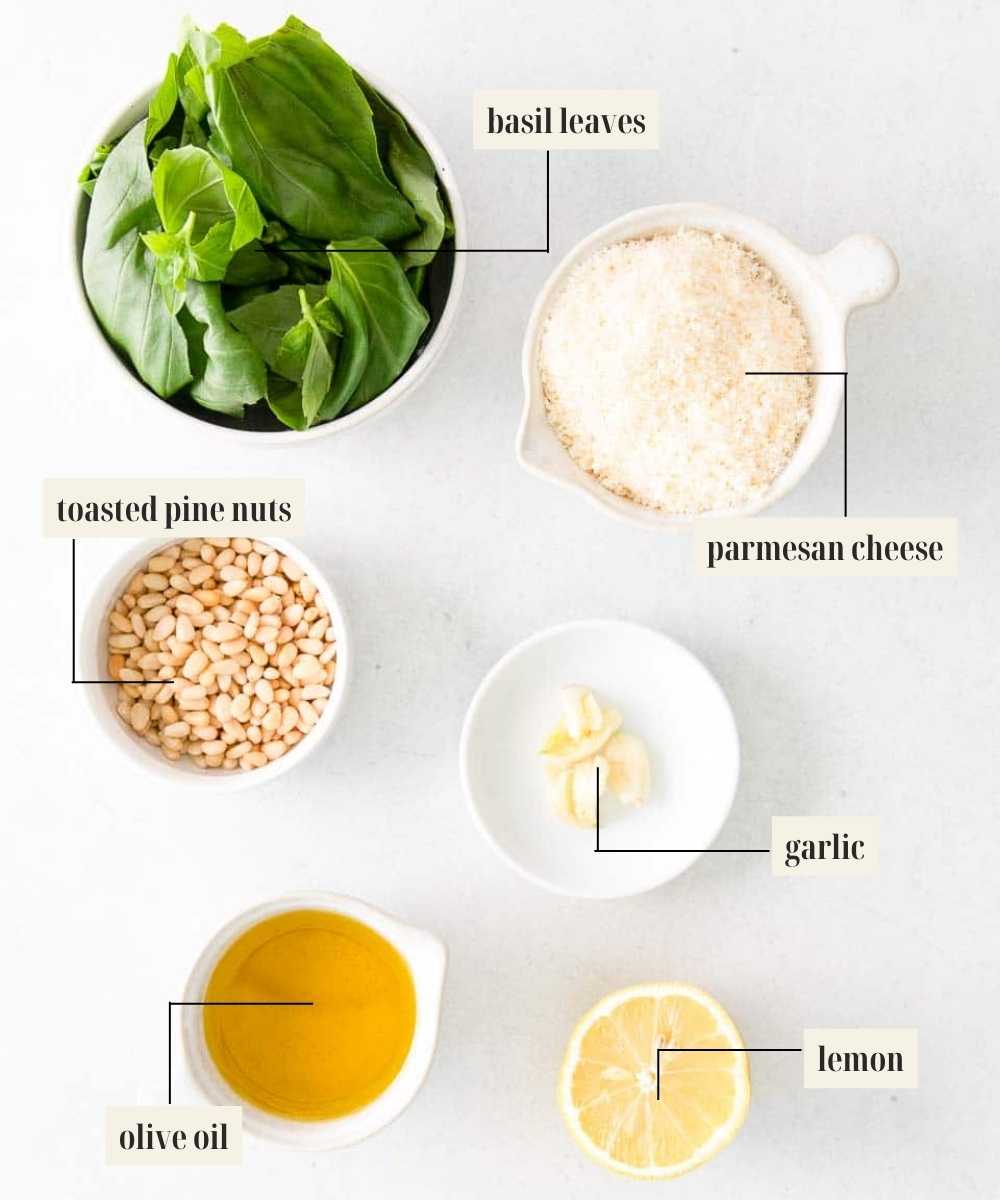
- Toasted pine nuts – these are the base of our basil pesto sauce. If you can’t find toasted pine nuts in the grocery store, you can toast raw nuts in a dry skillet over medium heat for 2-3 minutes or until fragrant. You can also use different nuts like cashew, pistachio, almond, or walnut.
You can also make this sauce without pine nuts. Just swap the pine nuts for an equal amount of sunflower seeds, pumpkin seeds, or even finely grated Parmesan cheese. - Garlic – adding garlic to your pesto sauce will give it a delicious flavor. Don’t forget this important ingredient.
- Lemon juice – adds brightness and freshness to pesto. Freshly squeezed lemon juice is key, so don’t use bottled juice. Substitute with lime juice if you don’t have lemon juice.
- Fresh basil leaves – Use fresh basil that’s not wilted or brown for the best pesto sauce.
- Parmesan cheese – gives the sauce a salty and nutty flavor. You can also use pecorino Romano in place of parmesan.
- Extra virgin olive oil – this helps to thin the sauce. I recommend using high-quality, robust olive oil that can handle the strong flavors of basil and parmesan.
🎯 TFN Pro Tip
Use organic ingredients for an organic pesto sauce!
Recipe Variations
- Thai basil pesto: substitute Thai basil for the Italian basil for your pesto. Thai basil pesto is ideal for recipes that use pesto in cooking. Unlike Italian basil, Thai basil has leaves that stand up well to heat.
- Arugula pesto: Arugula pesto is another great option. Just swap arugula for the basil, and you’re good to go!
- Vegan or dairy-free pesto: to make this sauce without cheese, substitute parmesan cheese for similar vegan cheese, or just leave it out completely.
Equipment Used in This Recipe
- Food processor or blender
- Or use your traditional mortar and pestle
How To Make Basil Pesto Sauce
In a food processor bowl, combine the pine nuts, garlic, and lemon juice.
Pulse until the garlic and nuts are broken up into small pieces.
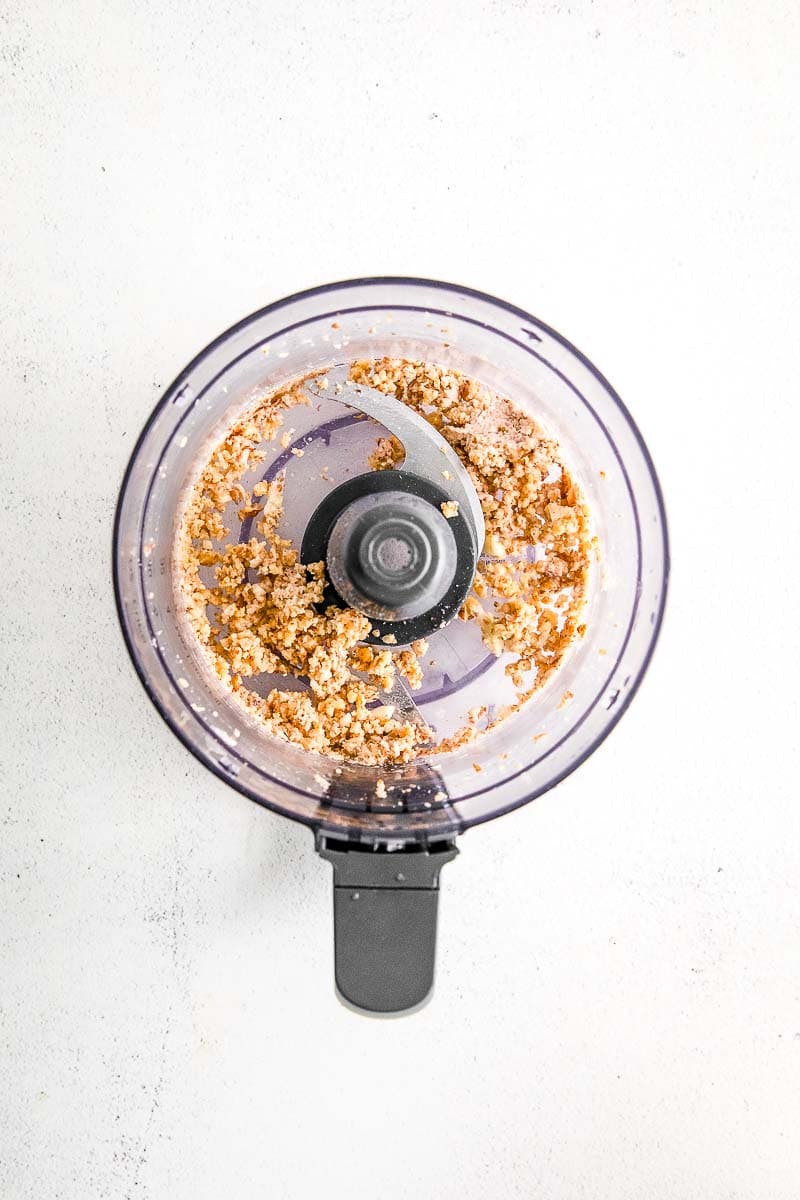
Add the basil and parmesan and blend until the basil is broken into small pieces.
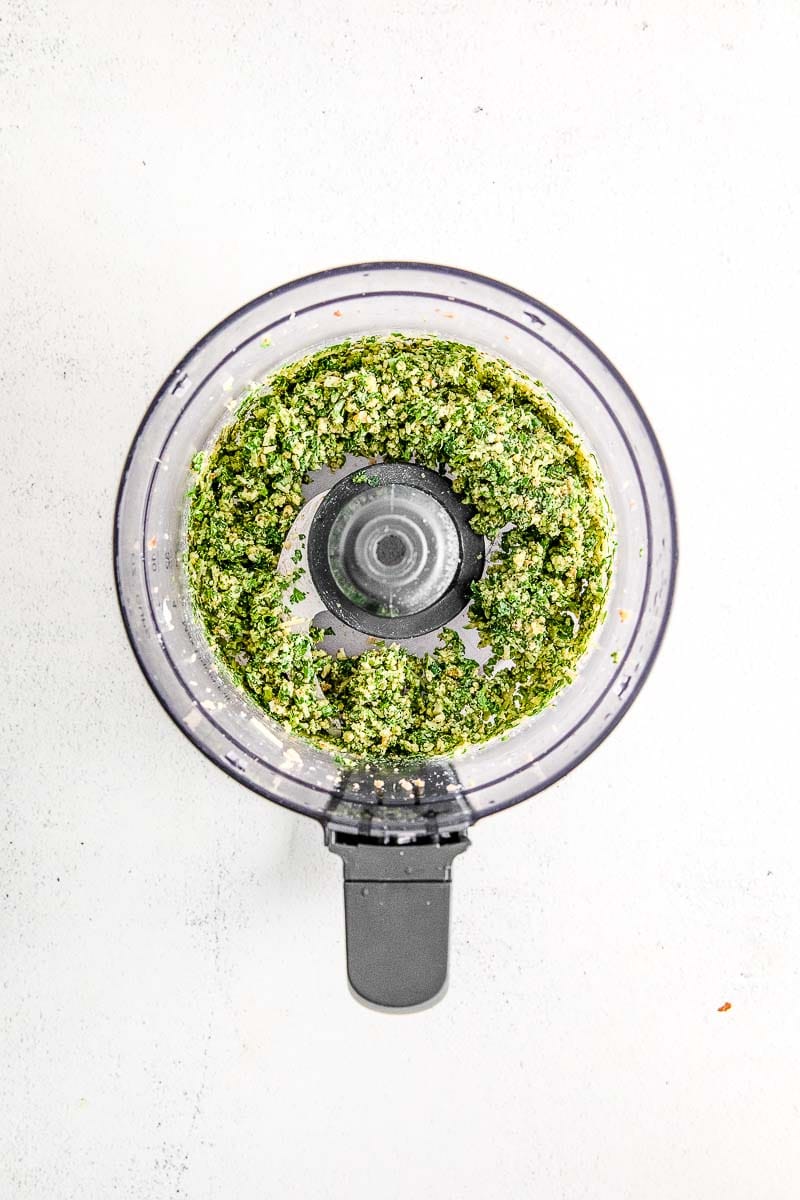
With the food processor on low, slowly add the olive oil. Keep pulsing until the basil pesto sauce is smooth and lump-free.
Then add salt and pepper to taste.
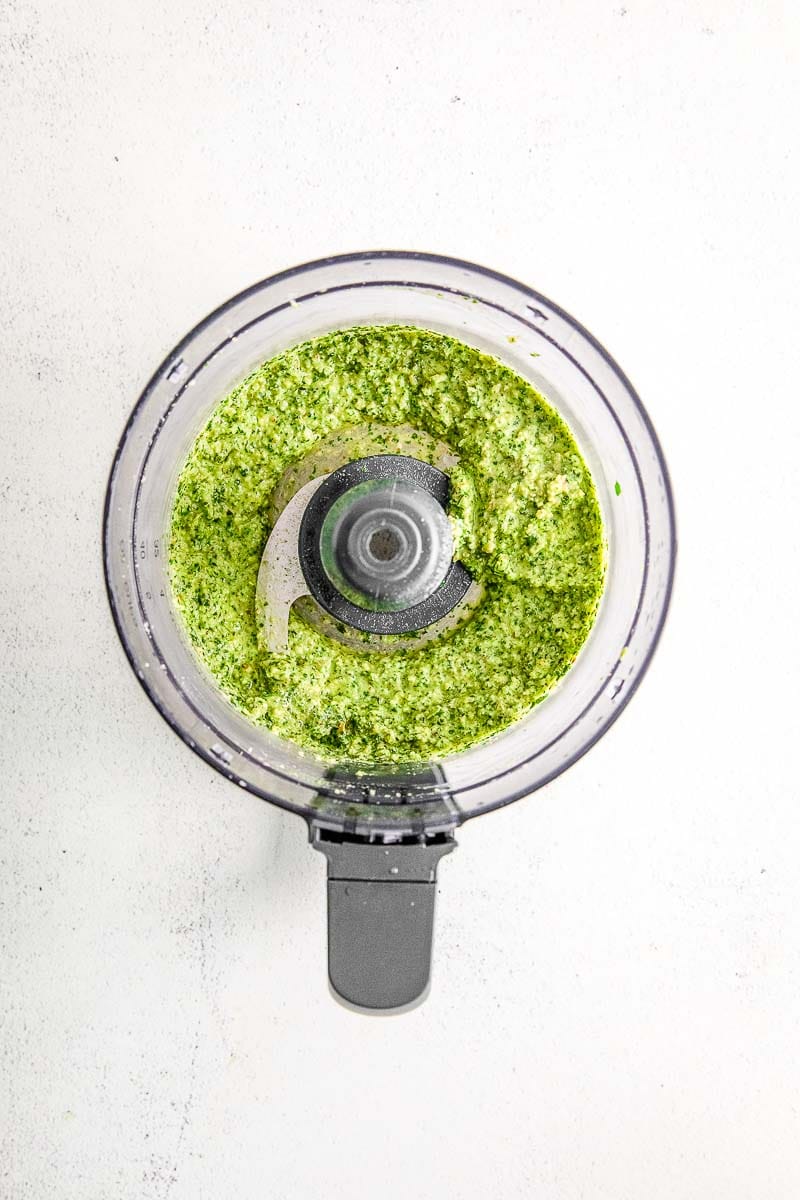
You can either set the pesto sauce aside until you are ready to use it or store it in an airtight container in the fridge for up to a week.
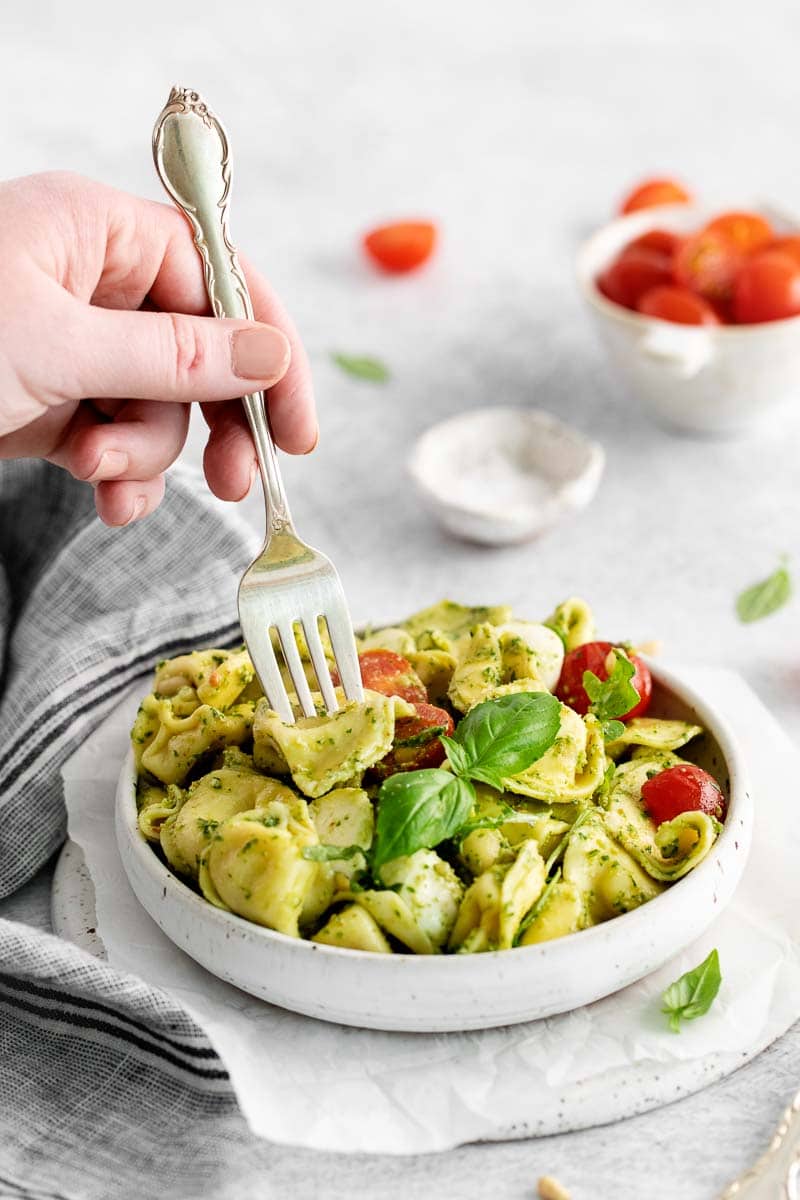
Recipe FAQs
I like to use it in our easy pizza crust recipe , in bruschetta, in sourdough garlic bread recipes, and even in Alfredo sauce.
You can enjoy pesto cold or at room temperature. If you want to heat it, do so carefully. Pesto is best when it’s fresh, so only heat it if you plan on using it right away. Gently reheat the pesto in a pan over low heat, stirring often. Or, use Thai basil for the pesto sauce (see above in recipe variations). It can handle heat better than other types of basil.
I love this recipe fresh, but you can also freeze pesto sauce! If you have leftover or extra sauce, add it to a small ice cube tray. After the pesto sauce freezes (about 1-2 hours), pop the cubes out and put them in a ziplock bag. Mark the date on the bag and use it within 6 months. Then, let it thaw before using.
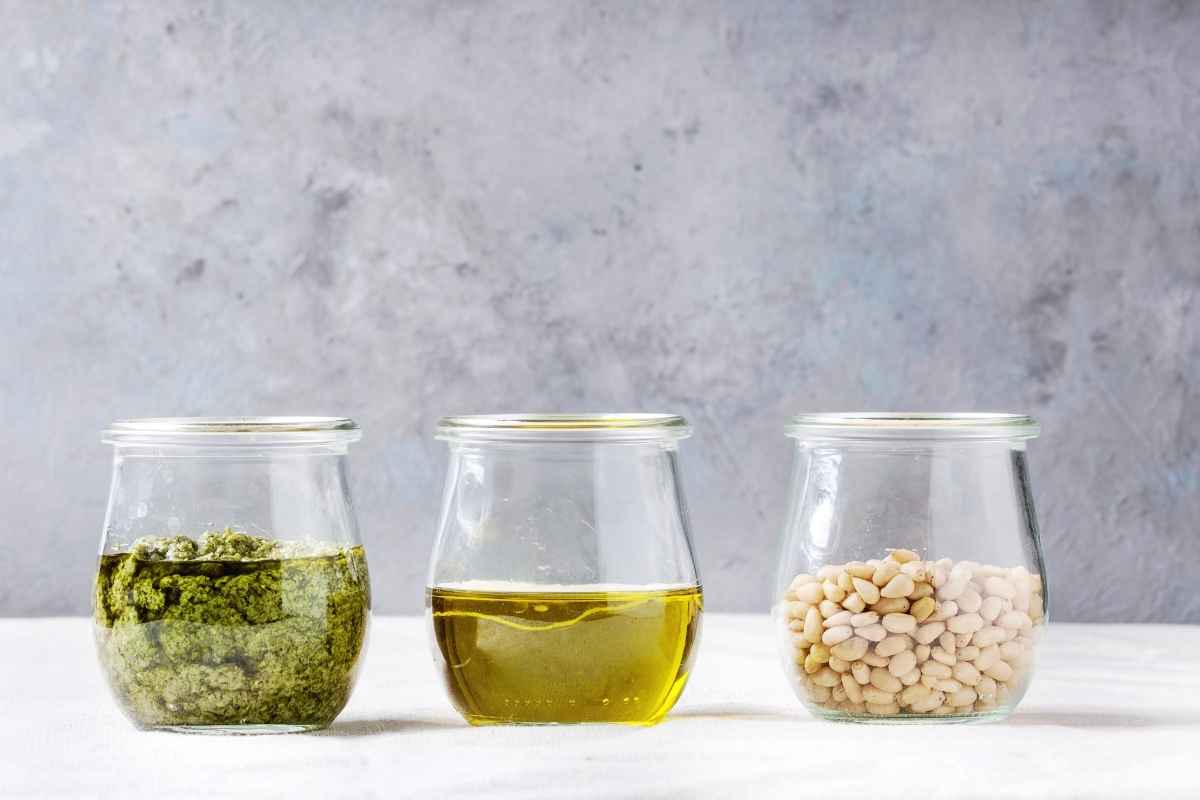
More Pantry Staples To Love…
If you tried this basil pesto sauce recipe or any other recipe on my website, please leave a 🌟 star rating and let me know how it went in the 📝 comments below. Thanks for visiting!
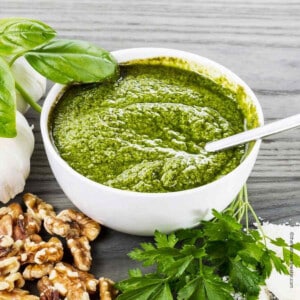
Basil Pesto Sauce
Equipment
- food processor
Ingredients
- ¼ cup toasted pine nuts
- 2 cloves garlic
- ½ lemon juiced
- 2 cups fresh basil leaves tightly packed
- ½ cup parmesan cheese freshly grated or shredded
- ⅓ cup extra virgin olive oil
Instructions
- Combine the pine nuts, garlic, and lemon juice in the bowl of a food processor. Pulse until the garlic and nuts are broken up into small pieces.
- Add the basil and parmesan and pulse until the basil is broken up into small pieces as well.
- With the food processor on low, slowly add the olive oil. Continue to pulse until the pesto is smooth and lump-free. Season with salt and pepper to taste.
- Set aside until ready to use or store in an airtight container in the fridge for up to a week.
Notes
- Pine nuts are the base of our pesto . If you can’t find toasted pine nuts in the grocery store, you can toast raw nuts in a dry skillet over medium heat for 2-3 minutes, or just until fragrant.
- Garlic adds a delicious flavor to the pesto. Don’t skip it!
- Lemon adds bright freshness to the pesto. Freshly squeezed lemon juice is key– I don’t recommend using bottled juice here.
- Basil is another base of our pesto– make sure it’s fresh, not wilted or brown.
- Parmesan adds a salty nuttiness to the pesto.
- Olive oil helps thin the pesto– I recommend a robust, good-quality olive oil that can stand up to the flavor of the basil and parmesan.
- Use organic ingredients for an organic pesto sauce!
- Thai basil pesto: substitute Thai basil for the Italian basil for your pesto. Thai basil pesto is ideal for recipes that use pesto in cooking. Unlike Italian basil, Thai basil has leaves that stand up well to heat.
- Arugula pesto: Arugula pesto is another great option. Just swap arugula for the basil, and you’re good to go!
- Vegan or dairy-free pesto: to make this sauce without cheese, substitute parmesan cheese for similar vegan cheese, or just leave it out completely.
- You can either set the pesto sauce aside until you are ready to use it or store it in an airtight container in the fridge for up to a week.
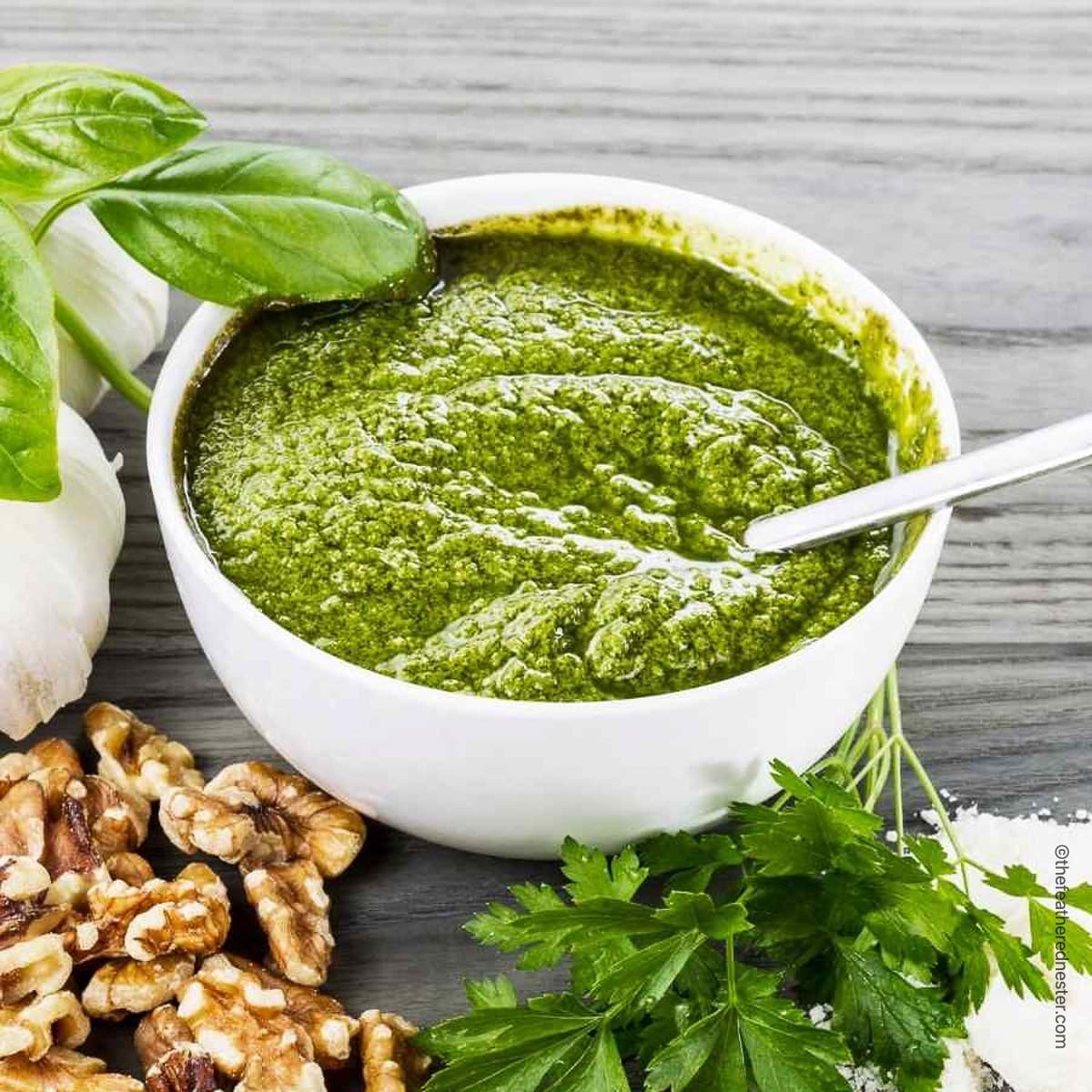

Ann says
I love pesto. Can’t wait to make this in the spring when I start growing my basil plant. Thanks!
Kim says
This looks so good and so easy to make, too! I can’t wait to try it on pasta night!
Casey says
I couldn’t believe how easy this was to make and it was so tasty! I can think of so many things I’d love to add this delicious pesto to.
Chenee says
This was so tasty! I added it to some linguini last night and everyone loved it!
Dannii says
This pesto sauce was amazing. I dipped some freshly baked bread in it whilst waiting for my pasta to cook. SO good!